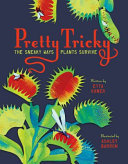2018 School Spending Survey Report
Pretty Tricky: The Sneaky Ways Plants Survive
Owlkids.
Sept. 2020.
48p.
Tr $18.95. ISBN 9781771473699.
COPY ISBN
VERDICT Although the text may confuse some young readers, Barron’s stellar artwork is a standout. Her captivating illustrations could motivate readers to further research the featured plants and animals.
RELATED
ALREADY A SUBSCRIBER? LOG IN
We are currently offering this content for free. Sign up now to activate your personal profile, where you can save articles for future viewing




Be the first reader to comment.
Comment Policy:
Comment should not be empty !!!